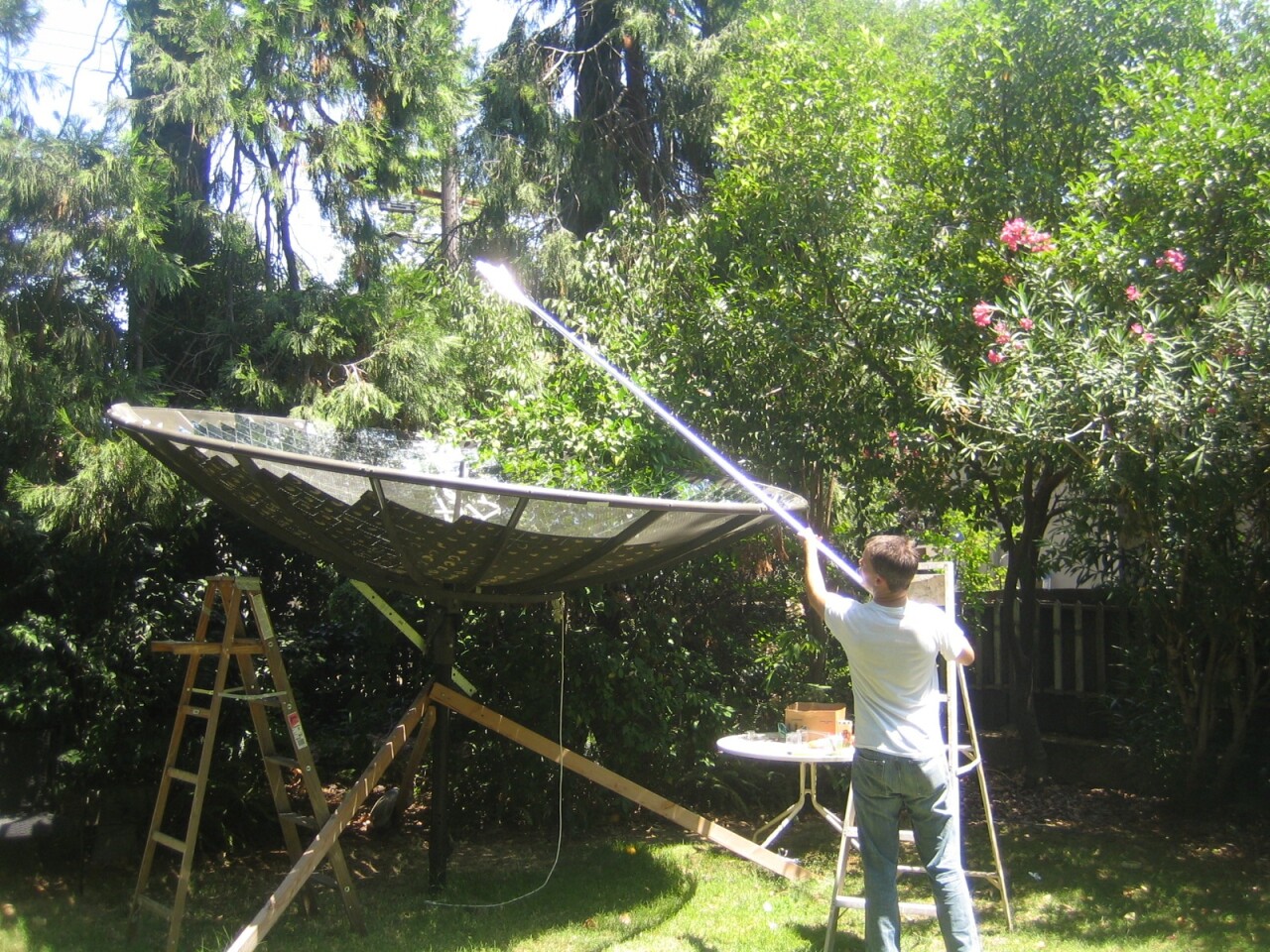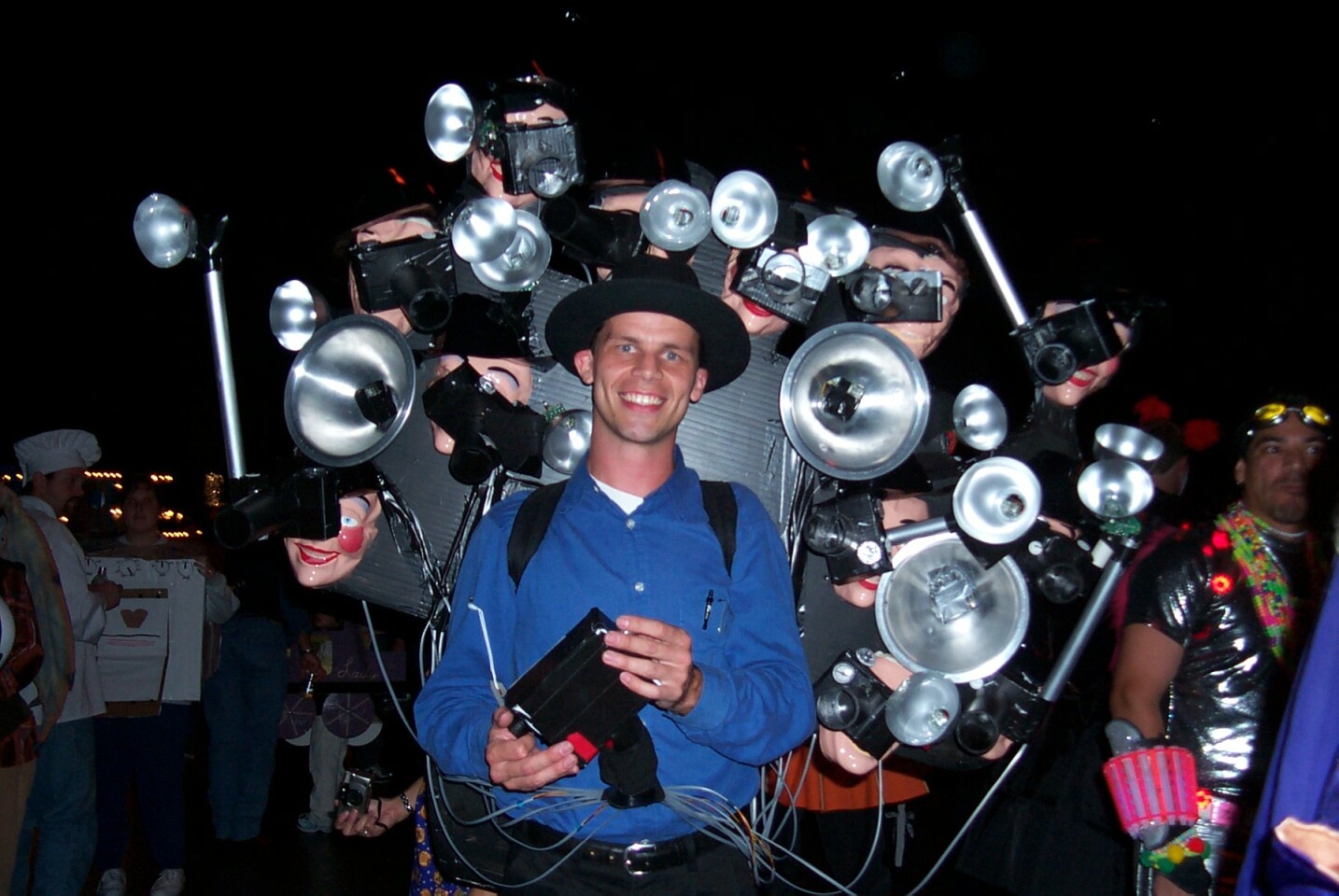When you think of people having a blast with science experiments, hands-on product research and wacky but clever inventions, chances are you think of MythBusters. Five years before that show’s 2003 premiere, however, Sacramento’s Rob Cockerham set about doing much the same thing on his Cockeyed blog. Today, approximately a million readers from around the world visit it every month, checking out his latest activities as documented in sections such as Incredible Construction, Science Club, and Pranks. We had a chance to talk to Rob recently ... when he wasn’t busy making cyclones out of fireworks, analyzing the compostability of SunChips bags, or sneaking bogus time machines into shopping mall displays.
How it all started
Rob began Cockeyed in 1998, mostly as a gag for his co-workers when he worked in tech support for MCI Internet (he now works as a copy editor for Medi-Cal, California’s Medicaid program). The real origins of the website, however, can be traced back to his being raised by a father who worked as a forensic scientist.“He did science at work, and it was the most interesting kind, although gruesome,” Cockerham told us. “He still has a hundred hobbies, and we had a kiln in the backyard, and we had a potter’s wheel, and we had welding equipment. We were just kind of turned loose in a big backyard, and there was always something new to build ... he taught us to take good notes, and to take pictures while you’re building something, not just at the end.”
Cockeyed is appropriately full of photos and notes, with the website currently weighing in at over 8,000 pages. Most of that content chronicles the creation process of his projects, as opposed to just the big finish – which is good, as things don’t always work out as planned.
“I hope that people can learn as much from the failures as from the successes,” he said. “Sometimes I have an odyssey to get to a failure, and it’s tempting to not post anything because the ending is so deflated, but at the same time I know that a lot of times you learn more from failures.”
The light sharpener

The successes are always more fun to read about, though, and the backyard sunlight-concentrating "light sharpener" was definitely one of his biggest. To build the device, he purchased an old 12-foot (3.7-meter) satellite dish and lined it with small mirrors. Those mirrors reflected and concentrated sunlight onto a point in the air above the middle of the dish, into which Rob dangled a variety of objects that were subsequently immolated by the sun’s rays. Those objects included a Pop Tart, a bar of soap, a vinyl LP, a box of crayons, a coconut and a watermelon, as seen in the video below (watch for the jet of steam at 00:56).
Although Cockerham generally likes to be unique in his creations, in this case he was inspired by the smaller-scale Solar Death Ray created by University of Washington student Louis Giersch. Ironically, however, it turned out that Giersch had in turn been inspired by Rob’s previous even-smaller-scale solar-concentrating parabola – an experiment in which Cockerham “did a terrible job and just got warm water.”
The paparazzi costume

As is the case with many creative people, Rob is big on Halloween costumes. Some of his efforts have included a panel of American Idol judges (in which he was the only real person), Doctor Octopus of Marvel Comics fame, and a relief map of the state of California. Perhaps his greatest work, however, was his paparazzi costume ... and no, he didn’t simply dress up as a single photographer, but as a whole pack of them, each one with a functioning flash on their camera. He wore the costume to a Halloween party for George Lucas’ special effects company Industrial Light and Magic, where it won first prize – no small feat, considering he was up against people who worked on characters like Yoda and Jar Jar Binks.
His 12 fellow paparazzo consisted of a number of painted, foam-filled masks mounted on a black background panel, which he wore by attaching it to a backpack. Each face had its own fake camera, with each camera featuring one or more of the old school flood-style flashes made from silver-painted pop bottle sections. The electronics for the flashes were drawn from a pool of 52 disposable cameras, which he scavenged from photo processing outlets. Wired to a central control unit (which was disguised as his own camera), he could fire off all 18 flashes within about two seconds.
“I had no idea if it would work,” he said, “and when it did, it was really spectacular to see.”
Floating hot air bubbles

In an earlier experiment, Rob created clusters of soap bubbles that floated up into the air, using helium. After a suggestion from a reader, however, he tried to achieve the same result using simple hot air. It was definitely a process of trial and error.
He started by running the exhaust hose from his clothes dryer into a bucket of soapy water, but burnt out the dryer’s thermal fuse in the process. Next up was a hose attached to his car’s exhaust pipe, but the exhaust simply wasn’t warm enough. He tried the car method again on a colder day, but still to no avail. Finally, he ran a hose from an electric pool toy-inflating pump into a bucket of hot soapy water. The result was glorious giant gobs of foam that sailed off into the night sky, as can be seen in the video below.
“I was amazed, I’d never heard of somebody doing that before,” he told us. “It’s completely possible, and I thought I had pretty good results ... take hot water and make bubbles out of it on a cold day, and they’ll float – it seems like magic to me! How come this doesn’t happen more often?”.
The Inspiration

The kind of things that Rob does on Cockeyed are endlessly entertaining to some people, yet no doubt cause others to simply scratch their heads and ask, “Why?”. For him, it’s all about hearing back from readers, and seeing how his findings are used. During 2009’s “Balloon Boy” hoax, for instance, people suddenly became very interested in research that he had done regarding the lifting capacity of a single helium balloon. Cockerham also made it onto the American national news program 20/20 when he tore up a credit card application form that had been sent to him, taped it back together, filled it in with someone else’s address (his parents’), sent it off ... and still received a credit card in the mail.
“I can check on my weblog, see who’s linking to what, and read the comments on my page and other pages that say ‘This guy’s an idiot’ or ‘I’d never really thought of that’ or ‘This is exactly the research that we came up with on my PhD project, but no one ever read that because it didn’t have dorky pictures,’” he said. “It’s definitely the feedback. It’s not always positive, but it’s always satisfying and fulfilling to read it.”








